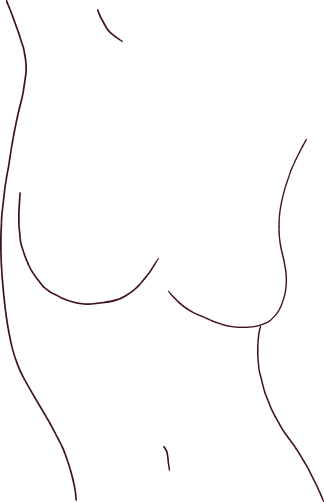Breast augmentation surgery (colloquially referred to as a ‘boob job’) uses breast implants to enhance the size and shape of breasts.
We aim to balance proportions, tailoring the approach for your unique anatomy and goals. By taking the time to listen, we believe we can better understand you. Get to know us as we support you through your breast implant journey.
Let’s talk.
Breast augmentation surgery (colloquially referred to as a ‘boob job’) uses breast implants to enhance the size and shape of breasts.
We aim to balance proportions, tailoring the approach for your unique anatomy and goals. By taking the time to listen, we believe we can better understand you. Get to know us as we support you through your breast implant journey.
Let’s talk.
There are many different breast implant types – round or teardrop, smooth or textured, low profile and high profile.
During your consultation we will explore options and discuss which combination of implant type and surgical technique is most likely to achieve your aesthetic goals.
There are many different breast implant types – round or teardrop, smooth or textured, low profile and high profile.
During your consultation we will explore options and discuss which combination of implant type and surgical technique is most likely to achieve your aesthetic goals.
Request a consultation Request a consultationThere are different techniques when it comes to breast augmentation. We draw on over 25 years of experience in cosmetic breast surgery to guide you.
There are different techniques when it comes to breast augmentation. We draw on over 25 years of experience in cosmetic breast surgery to guide you.
Request a consultation Request a consultation
We perform breast augmentations under a general anaesthetic in a day hospital. You will be able to rest and recover in your own bed on the night of surgery, and most people return to work after one week.
We like to make sure you are well supported in your recovery journey. We therefore include all reviews with our nurse or doctor in the cost of surgery for the first 12 months to ensure we can help you with any questions that arise.
We perform breast augmentations under a general anaesthetic in a day hospital. You will be able to rest and recover in your own bed on the night of surgery, and most people return to work after one week.
We like to make sure you are well supported in your recovery journey. We therefore include all reviews with our nurse or doctor in the cost of surgery for the first 12 months to ensure we can help you with any questions that arise.
Request a consultation Request a consultation
*Please note, all after photos are three months post-procedure. Outcomes shown are only relevant for this patient and do not guarantee similar results for other patients and will vary according to genetics, diet and exercise.
A consultation is a chance for both you and Dr David Topchian to get to know each other. Dr Topchian has performed cosmetic surgery for thousands of women over the past 25 years. He can explore your aesthetic goals and options and answer your questions. You can learn about how we can support you on your journey.
You can learn about how we can support you on your journey.
A consultation is a chance for both you and Dr David Topchian to get to know each other. Dr Topchian has performed cosmetic surgery for thousands of women over the past 25 years. He can explore your aesthetic goals and options and answer your questions. You can learn about how we can support you on your journey.
You can learn about how we can support you on your journey.
Request a consultation Request a consultation